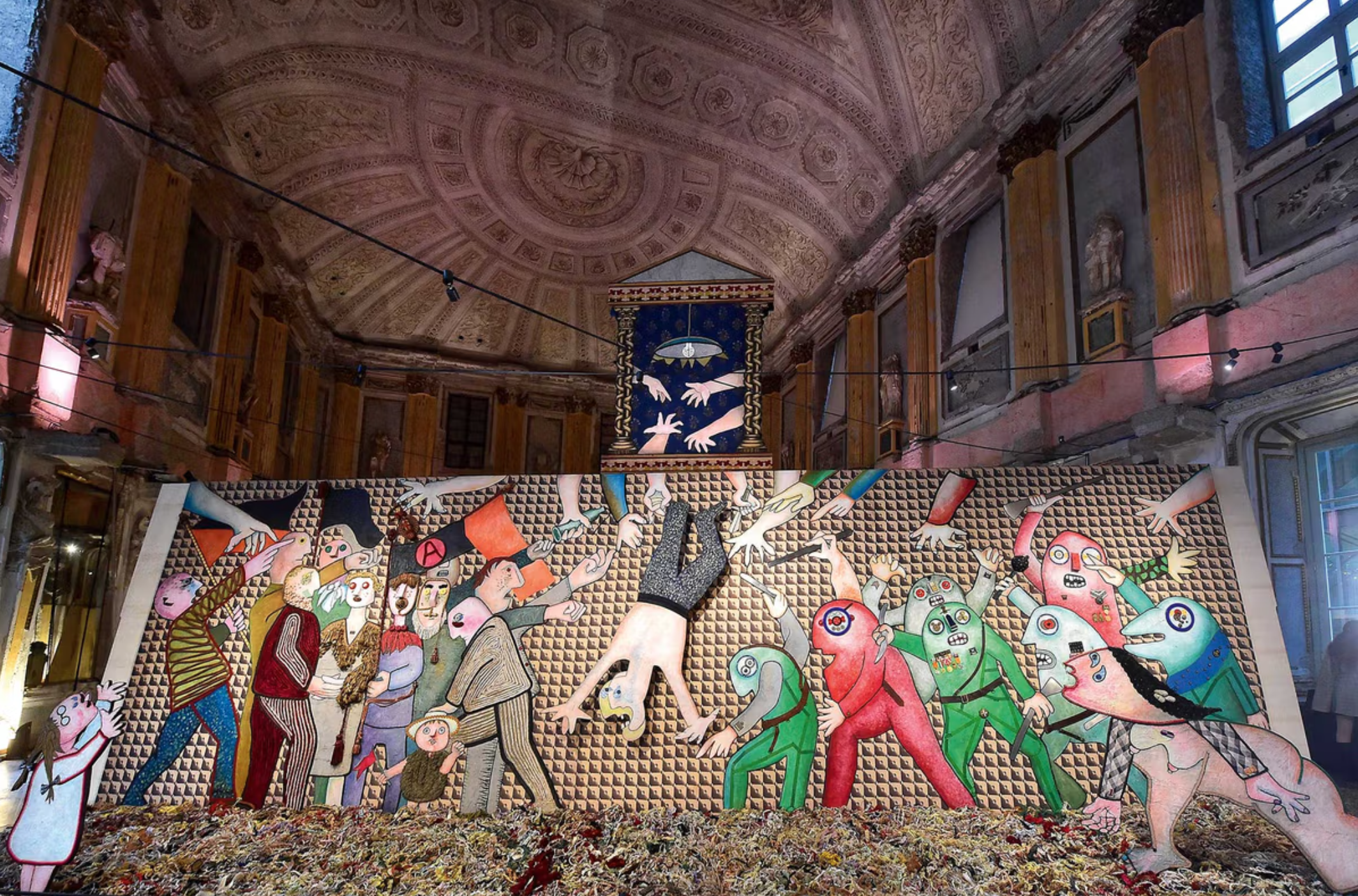Politicians in the city say the “inadequate” display of the mixed-media piece depicting Giuseppe Pinelli, who died after falling out of a police station window, fails to properly confront a dark chapter in the city’s history
By James Imam
The city council of Milan has sparked outrage by placing a 3m x 12m work by the avant-garde artist Enrico Baj—depicting the suspicious death of an anarchist rail worker in police custody in 1969—on permanent display in a small room at the Museo del Novecento. Critics accuse the council of lacking the courage to fully confront one of the city’s most divisive post-war political episodes.
Giuseppe Pinelli was detained by police for questioning over a bomb attack on a Milan bank in Piazza Fontana that killed 17 people. Three days later, he fell to his death from a fourth-floor window of the police station where he was being held. Following an investigation, the prosecutor Gerardo D’Ambrosio later ruled that the anarchist had fainted and lost his balance. However, far-left groups maintained that he was pushed by Luigi Calabresi, one of three officers interrogating him.
Inspired by Guernica
Baj’s artwork, I Funerali dell’anarchico Pinelli (1972), is composed of wooden silhouettes mounted on a board. It depicts Pinelli falling headfirst, with onlookers—including his wife and two daughters—on one side and demonic police officers wielding daggers on the other. The piece, often said to have been inspired in part by Picasso’s famous Guernica (1937), also features a separate window framing four outstretched hands, which has sometimes been positioned above the main collage.


